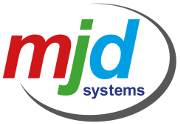What is a UPS and why do I need one?
We always recommend that our clients install a UPS along with their server or business critical PC, but often we get asked the question why it is necessary and do they really need it. Today, we want to explain how a UPS works and why it is an important part of your network and IT infrastructure within your company.
UPS stands for Uninterruptible Power Supply. It can also be known as a battery backup. The job of your UPS is to provide backup power in the event of a power cut or voltage drop it can also stop dangerous electrical spikes or surges damaging your equipment. The battery power within the UPS is then used to safely shutdown your server in a controlled manner to protect it. A UPS could also be chosen with a correct size of battery to allow continued operation until a generator has started up in the event of a power cut, allowing safe operation until the generator takes over providing power to your premises.
A UPS can have other electronic equipment connected to it to protect other systems as well. This is where calculations are carried out to determine the siz e and model of the UPS required to provide enough power to shutdown all systems connected to the UPS. This is why it is important at the point of any new server or replacement server work or critical device that we liaise with our clients to determine if there are any other mission critical systems within their network that they may want to include within their UPS protection. For example, some clients required their phones system to continue operating on the battery power and be able to be turned off in a controlled manner to avoid damage of an uncontrolled shutdown from a power cut.
e and model of the UPS required to provide enough power to shutdown all systems connected to the UPS. This is why it is important at the point of any new server or replacement server work or critical device that we liaise with our clients to determine if there are any other mission critical systems within their network that they may want to include within their UPS protection. For example, some clients required their phones system to continue operating on the battery power and be able to be turned off in a controlled manner to avoid damage of an uncontrolled shutdown from a power cut.
So, now the why do you need one. Let us explain what would happen to your server if a power cut were to happen with no UPS. If we explain it first in terms of working on your PC and creating a new file. You’re half way through saving the file and power goes out. The PC hadn’t quite finished writing the new file to your hard disk and has stopped half way through. You will have more than likely lost this document and any work carried out on it. Losing one file can be frustrating and probably lost time of around an hour let us say for this example’s sake. If we now think of our server, which is being accessed by numerous users and is responding to and actioning numerous process requests from these users’ devices that are connected to it. This means they are constantly writing data about every single one of these requests. With a server, it will be a lot more than just one file that is corrupted! It could be a database used by all staff and require specialist IT support to repair it after an uncontrolled shutdown and this will all require intervention from your IT support to resolve the issues.
This is why we recommend installing a UPS from the start with your server. The relatively small capital investment in the UPS hardware can potentially save you more hours of IT support than the cost of the UPS device itself. You could potentially see your return on investment after just one power cut! As you are able to start up where you left off once power returns because your server was able to shutdown in a controlled manner.
However, a UPS requires maintenance and monitoring to ensure that it is still working as required. As the device ages, it may need a replacement battery to ensure it can hold adequate charge to protect the systems connected to it. As part of our advanced remote server monitoring software we are able to receive notifications from our client’s UPS devices which may have battery warnings, loses communication with the device or are no longer able to provide sufficient power for the duration the device needs to safely run or for a controlled shutdown.
If you have any questions about your own UPS or would like to explore getting a UPS installed after reading this post please don’t hesitate to get in touch with the team here at MJD and let’s get IT working for YOU.
